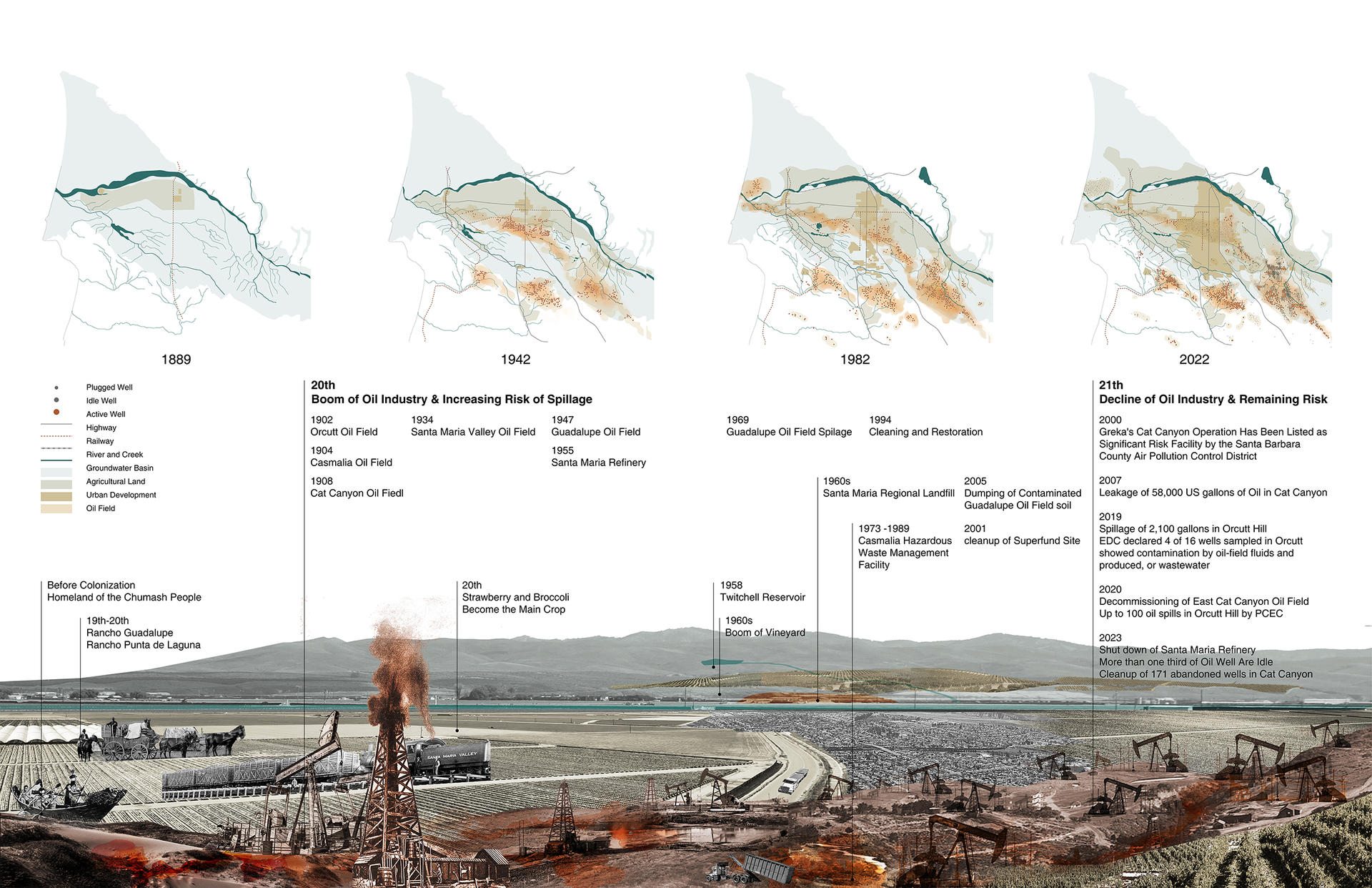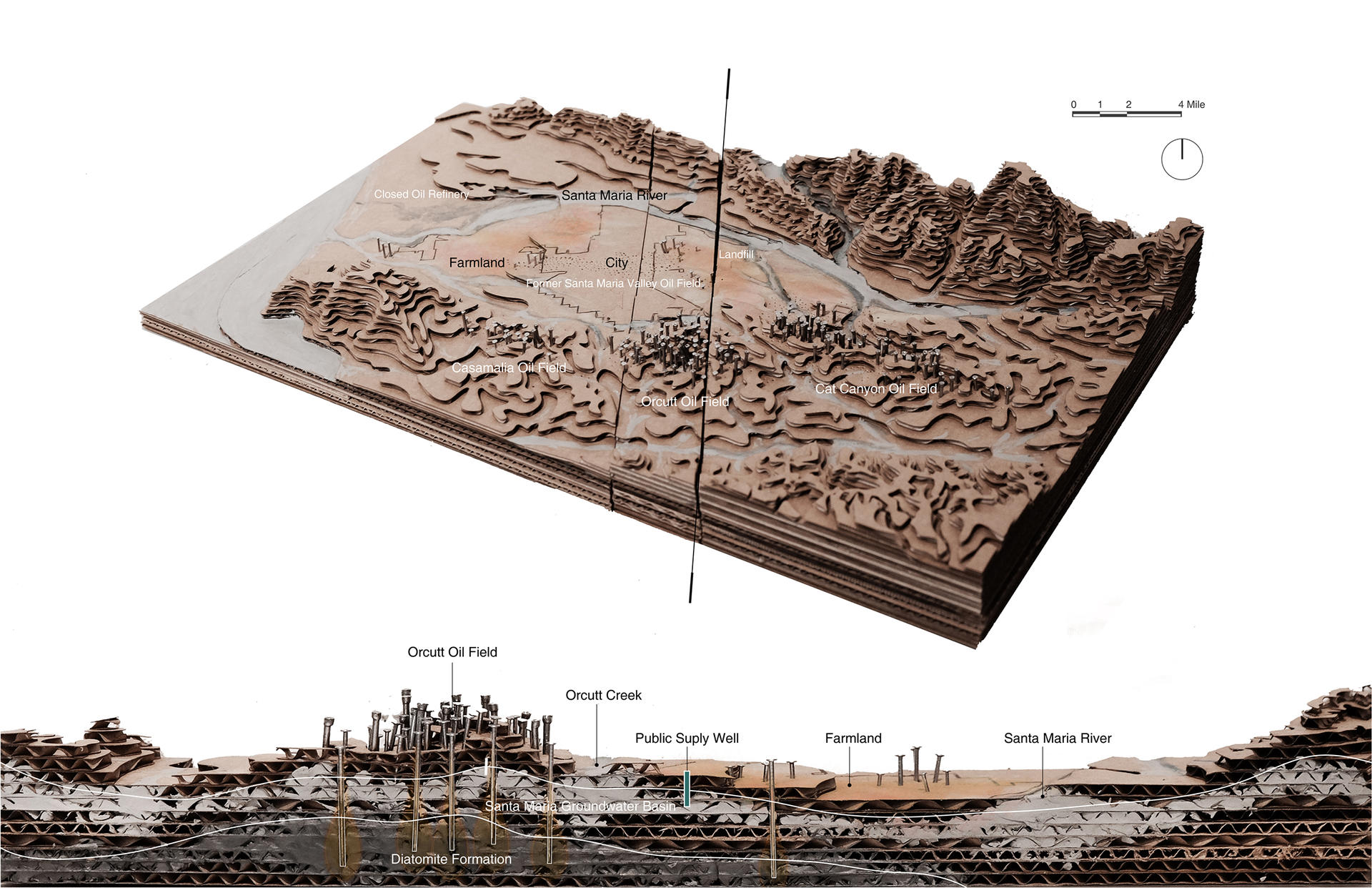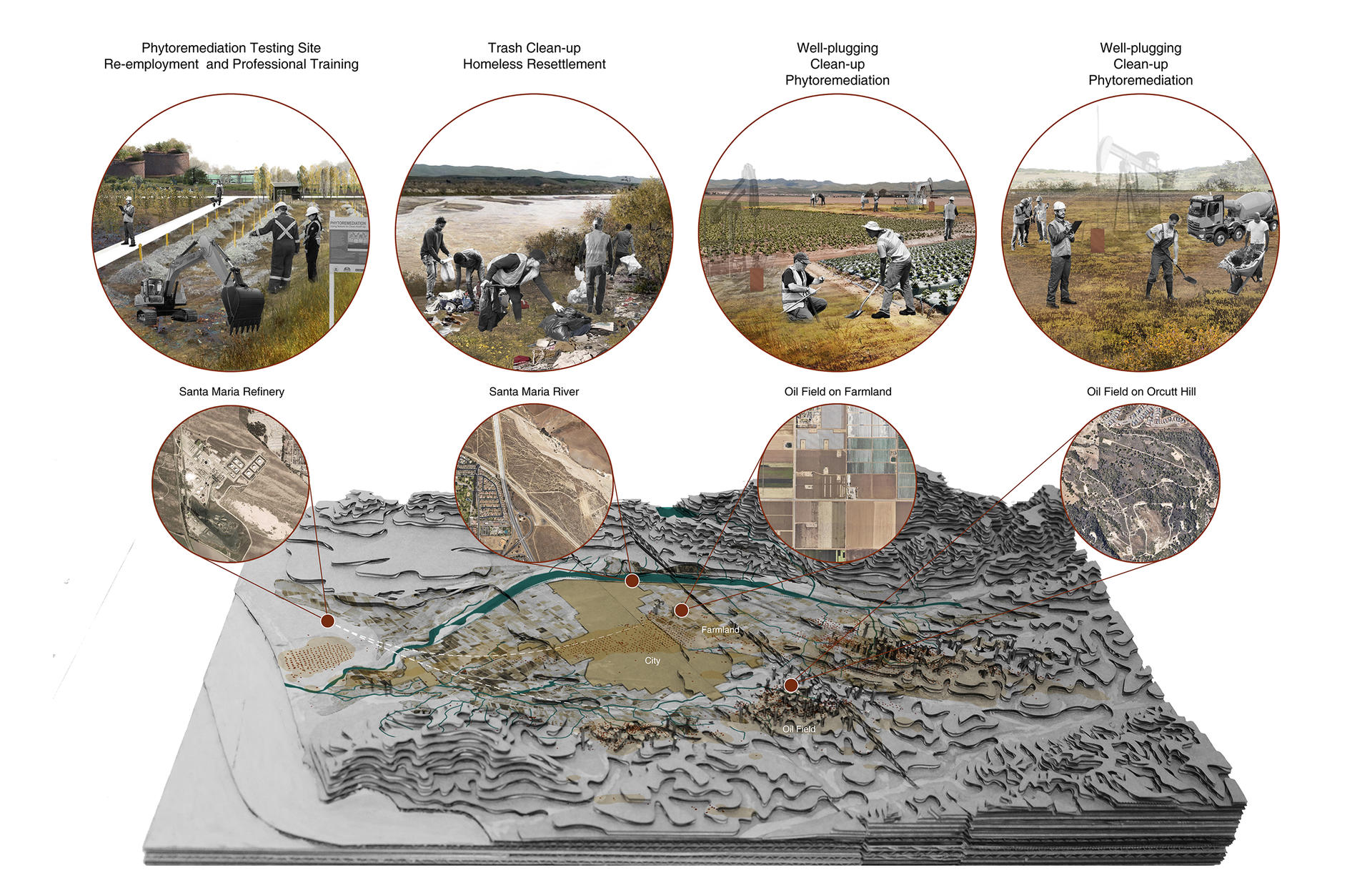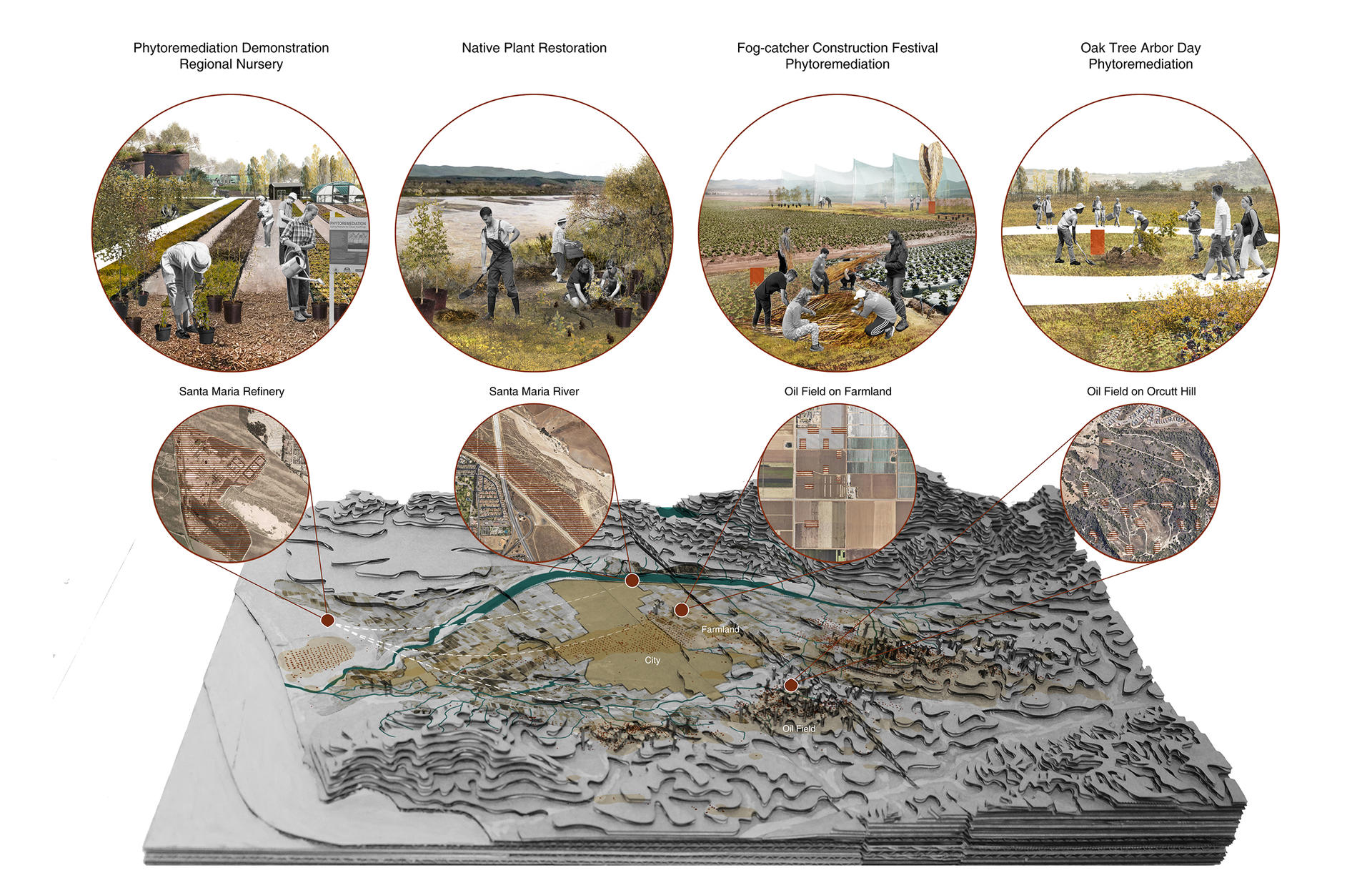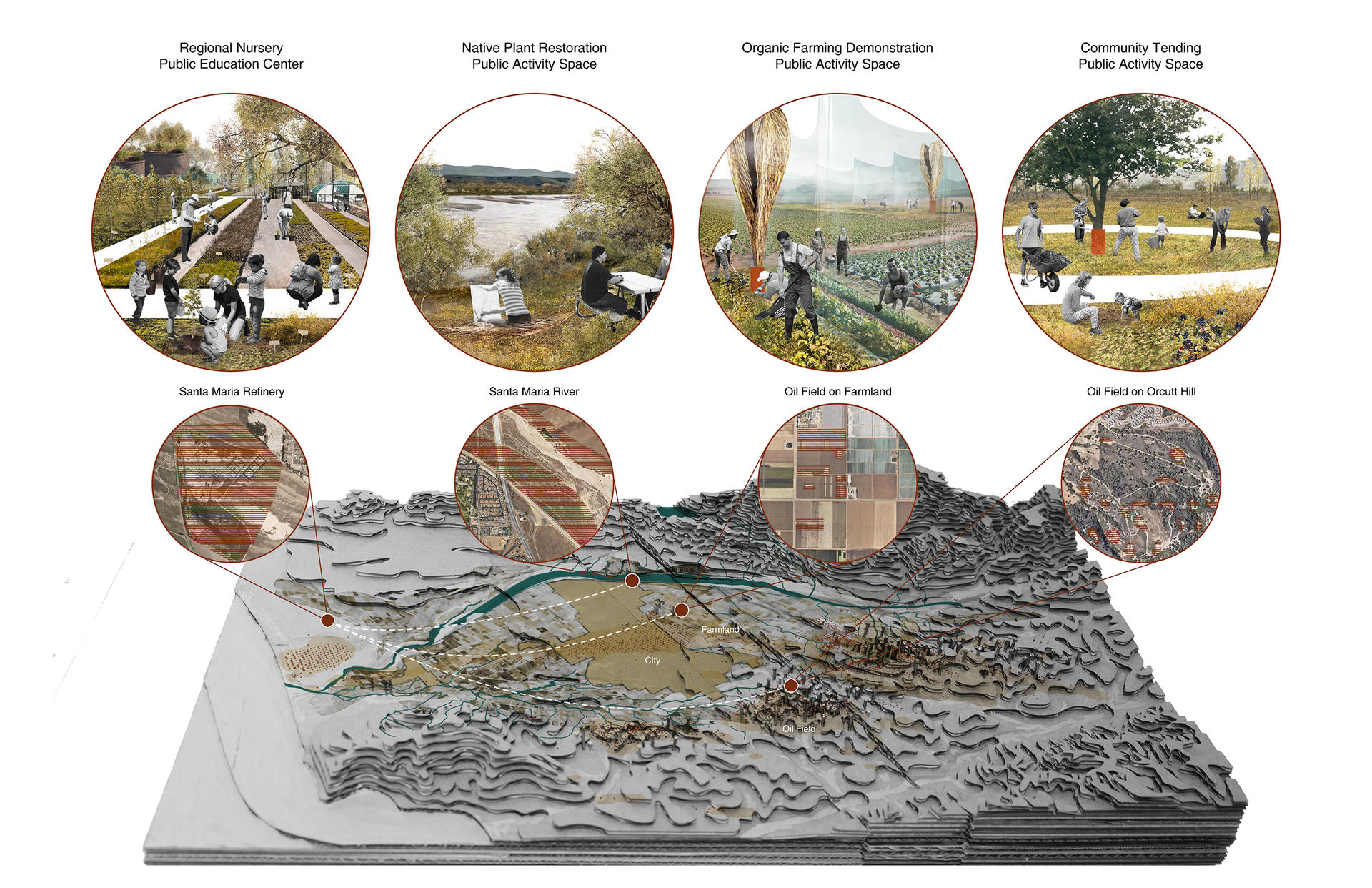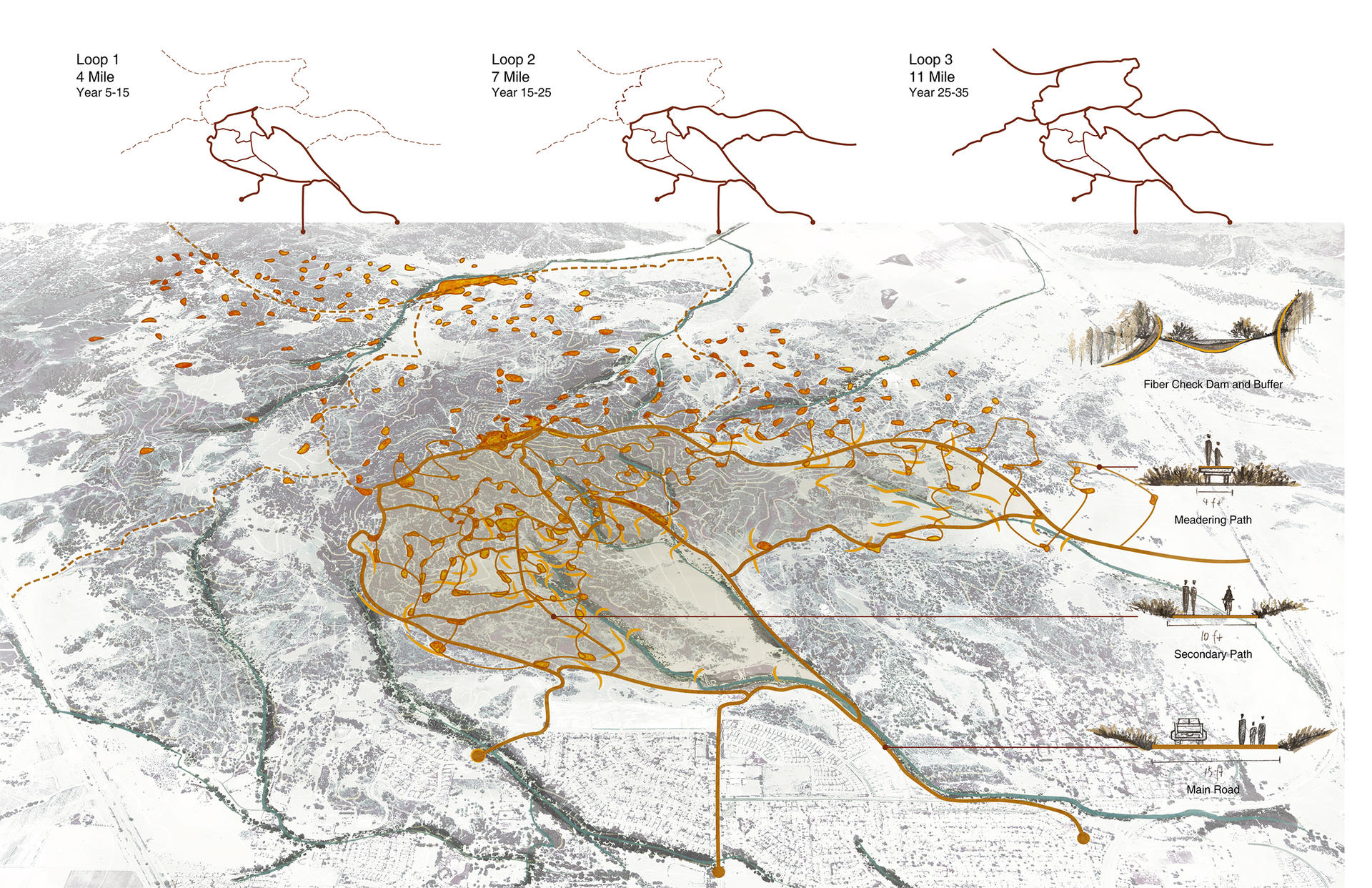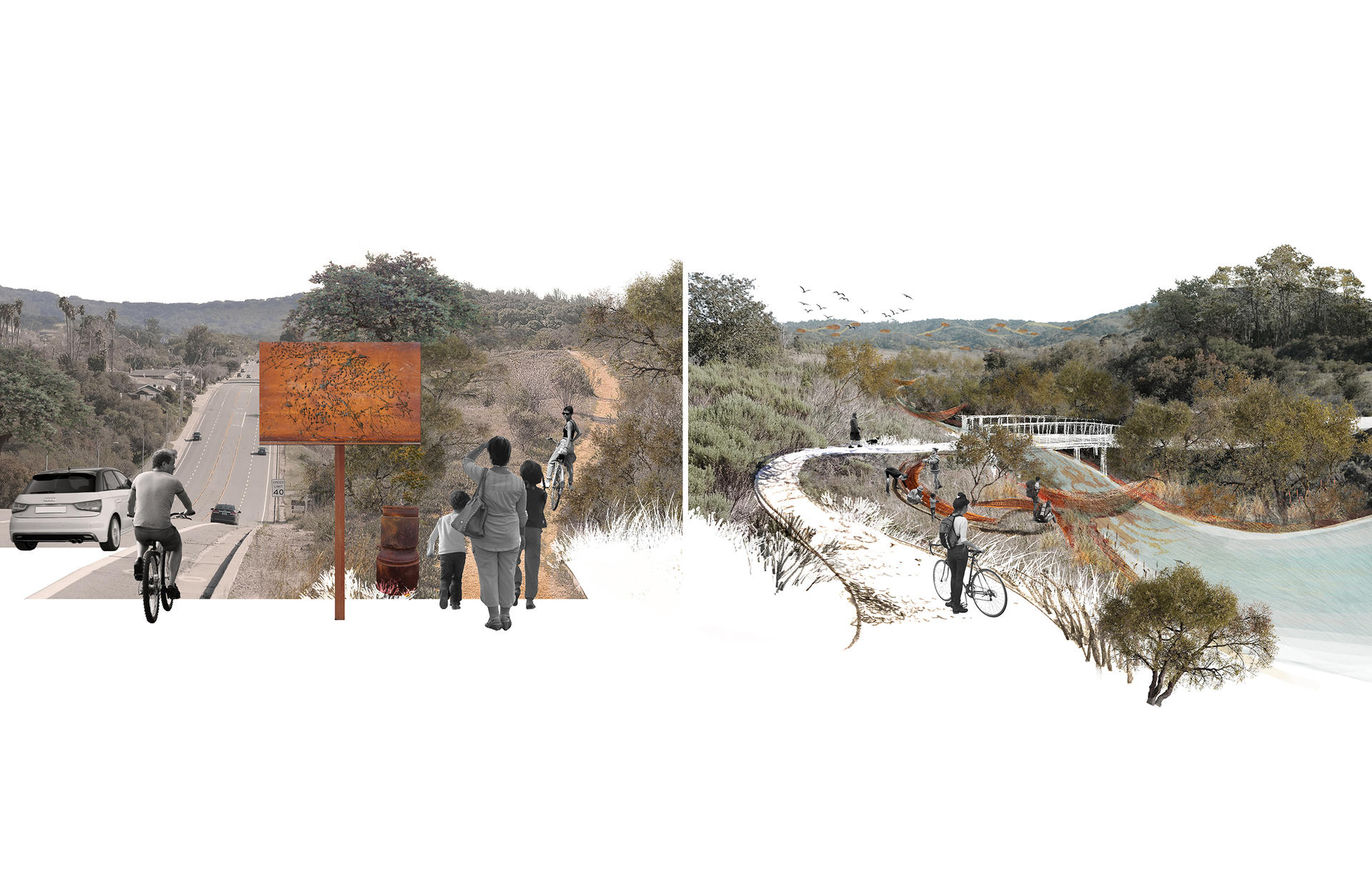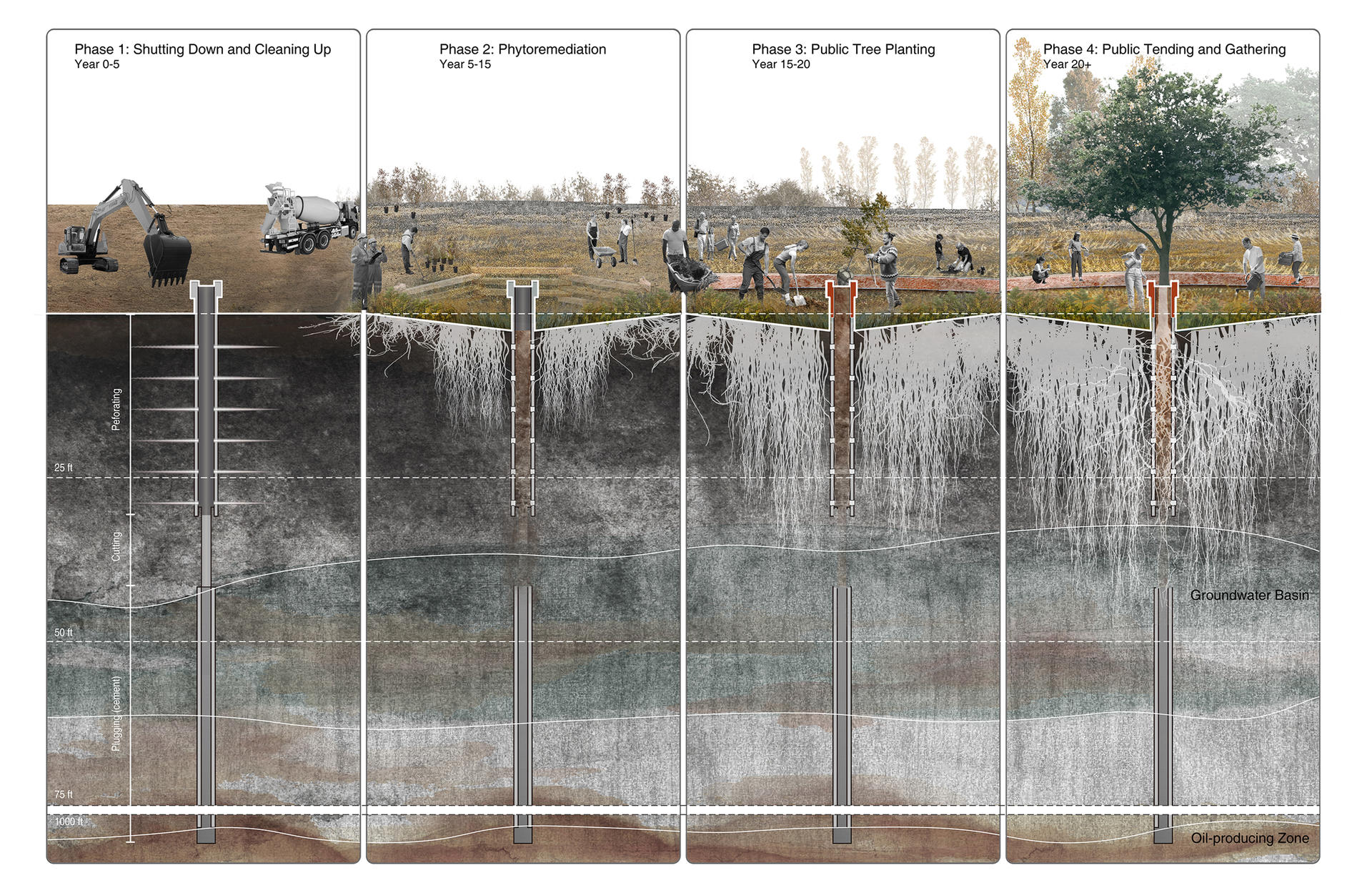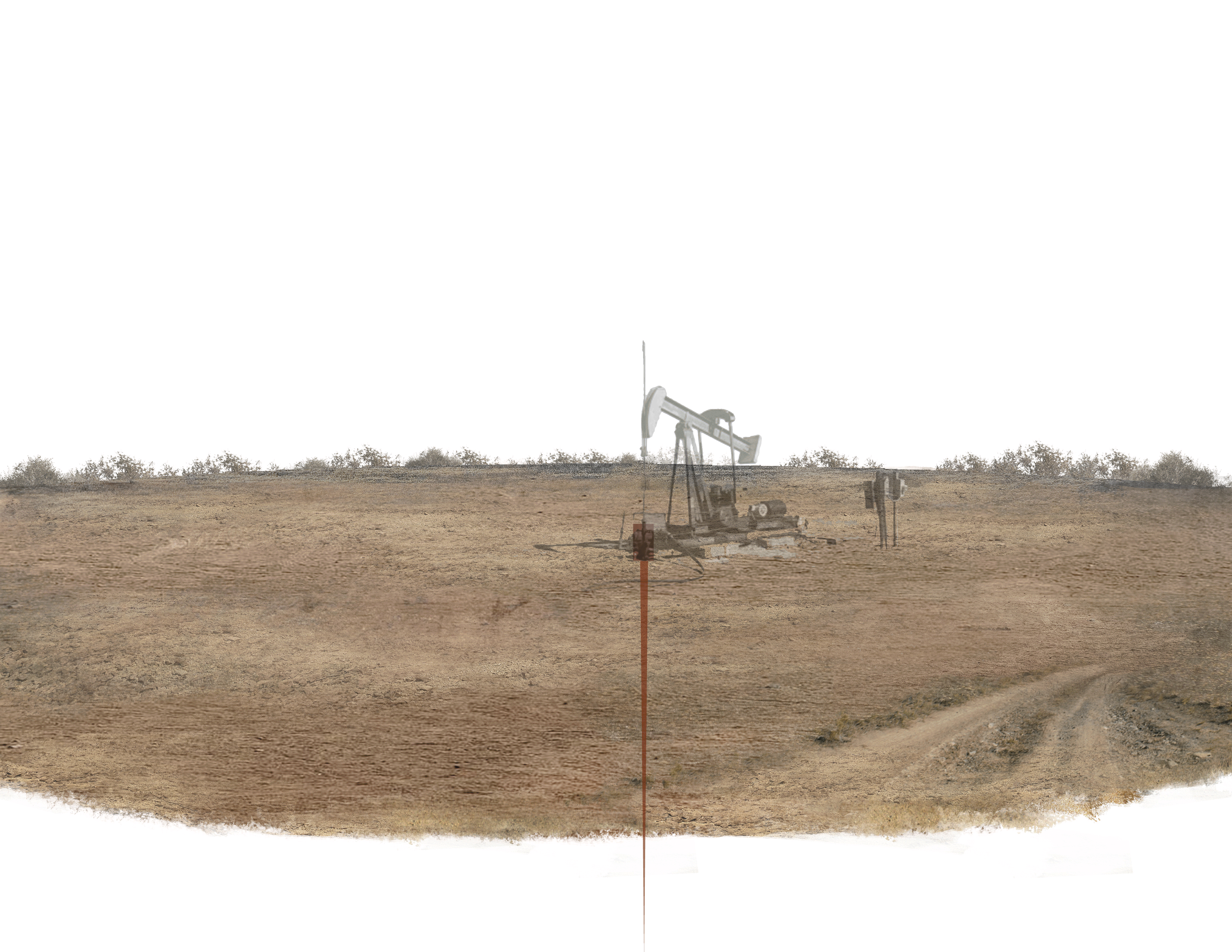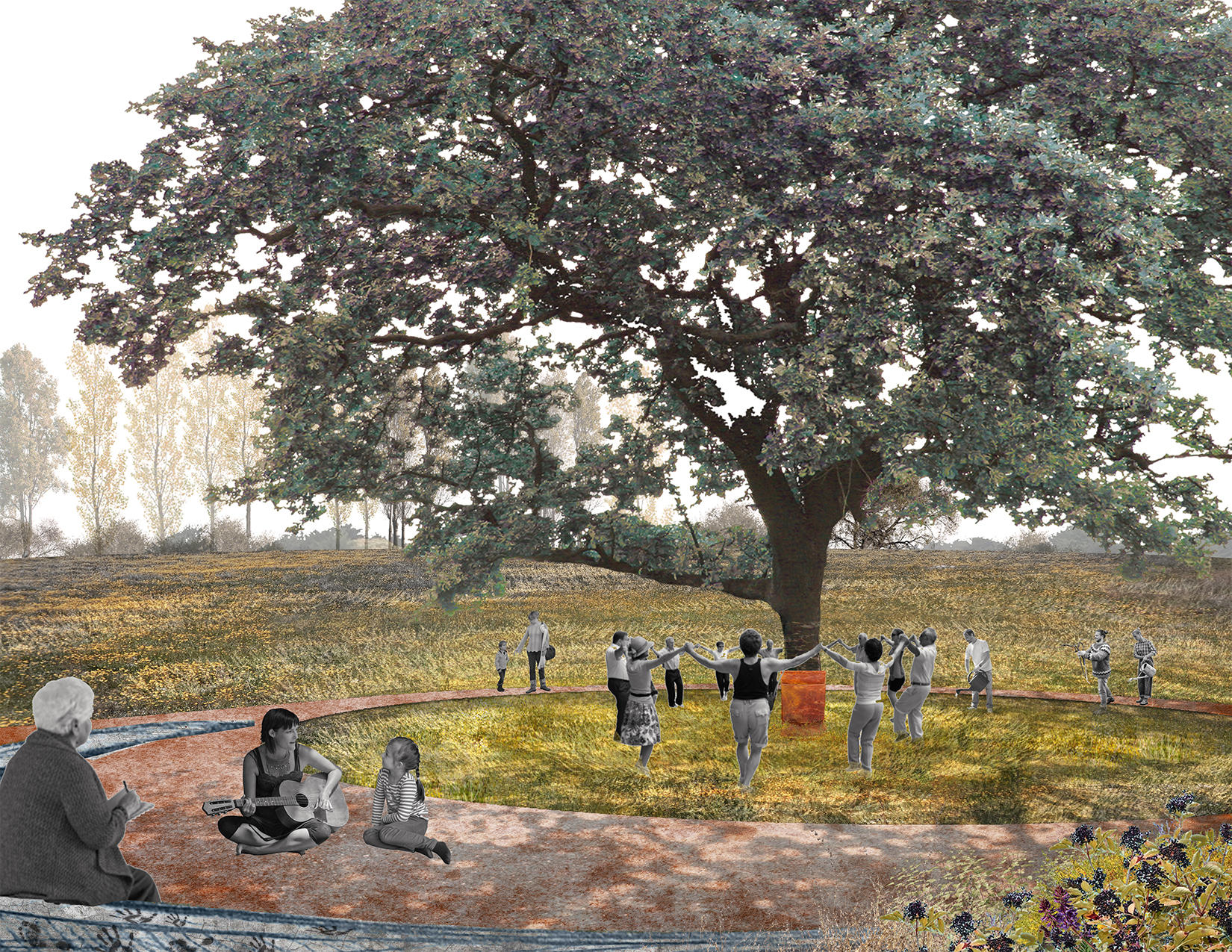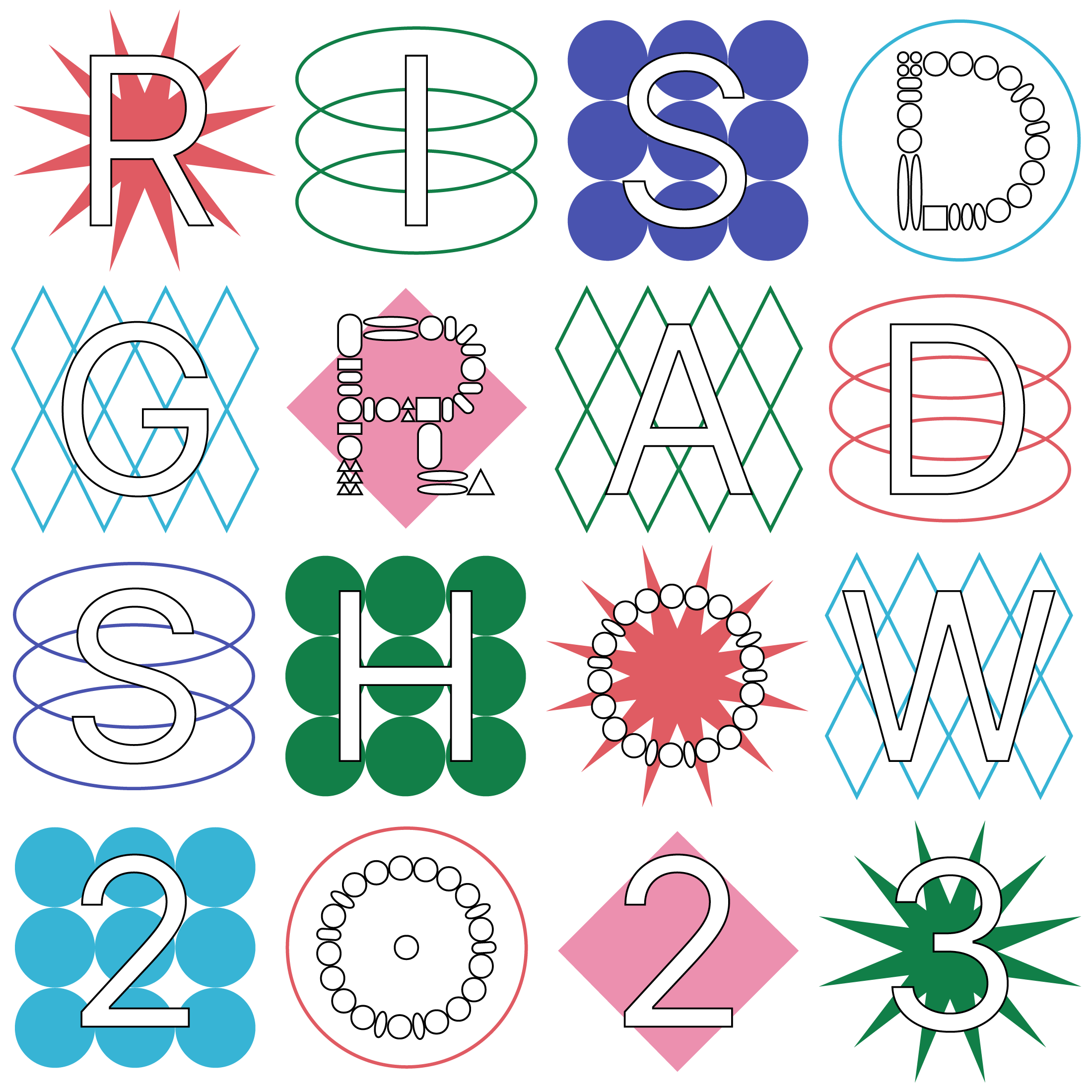Embodied Healing
The systematic phased healing consists of two interactive parts, mourning and suture, which revisit the man-land relationship and bounce between the inner and outer. It aims to raise the public's awareness and empathy, let everyone and the land witness history and create collective memory, and establish reciprocity through mutual commitment and embodied actions.
The past emphasis on ecological techniques in land reclamation has neglected community needs, long-term human commitment, and broader impacts of environmental degradation, failing to address the source of land trauma deeply rooted in the separation between nature and humans and bereft stewardship of the land. While as the forms of one thing emerge from relations with others, land and body interact and shape each other in multiple ways, making landscape imprints with human traces and forming human lifestyles and memories of a place in turn. Suppose trauma can be seen as adding complexity and dimensionality to the man-land bond. In that case, the question is how we could call back the past intimacy along with ecological restoration rather than reclaiming a traumatized land by erasing the history of disturbance.
It's all about "aboutness": How does what happens to that land relate to us? How to address the vulnerability of the land and mend the" brokenness"? As argued in this thesis, healing serves as a two-way restoration process that repairs land and people simultaneously. It involves physically restoring the damaged land and a mental and emotional rejuvenation process that incorporates humanistic care for people living on that land. By incorporating humanistic care and involving the local community in the restoration process, we are supposed to witness and remember the land trauma and view the land as an extension of ourselves and vice versa. In this way, we breathe together, resonate together, and heal together.
